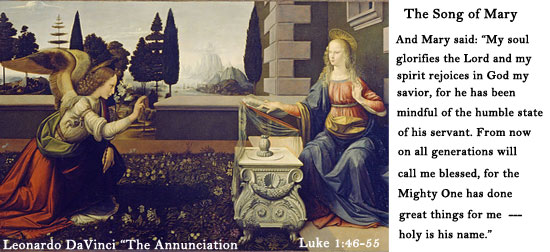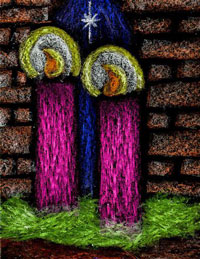From the Winter Issue, 2012 of The Anglican Digest
One of the things I like most about the Christmas season is the music. It only occurred to me recently that so many of the Christmas carols came to us from Anglicans. Even our popular image of jolly old St. Nick was shaped by a professor of biblical studies at (of all places) an Episcopal seminary.
“Twas the Night Before Christmas” is a poem published anonymously in 1823 and generally attributed to Clement Clarke Moore, a professor of classics at Columbia and lay Professor of Hebrew and Bible at the General Theological Seminary, in New York (built on land he donated). The poem, which has been called “arguably the best-known verses ever written by an American,” is largely responsible for the conception of Santa Claus from the mid-nineteenth century to today.
And what about the carols? The text of the popular “O little Town of Bethlehem” was written by Phillips Brooks, an Episcopal priest, long-time Rector of Trinity Church in Boston, and later Bishop of Massachusetts. He was inspired by visiting Bethlehem in 1865. At Christmas, 1868, he asked his organist, Lewis Redner, to write music for the poem he had written.’ Redner’s tune, titled “St. Louis,” is the one most often used.
John Mason Neale, an Anglican priest, scholar, and hymn-writer, translated many ancient hymns, including the Christmas classic “Of the Father’s love begotten.” He was also responsible for much of the translation of the Advent hymn “O come, O come, Emmanuel,” based on the “Great O Antiphons” for the week preceding Christmas. Neale’s most enduring and widely known legacy is probably his own original Christmas contributions, most notably “Good Christian men, rejoice” and his Boxing Day carol, “Good King Wenceslas.”
The Anglican priest Charles Wesley penned the classic “Hark! The herald angels sing.” The original words were reworked by his friend and fellow priest a George Whitfield into the verses familiar to us today. The “Father of English Hymnody” Isaac Watts , a nonconformist minister in the Church of England, wrote the famous carol “Joy to the world!” Anglican bishop Christopher Wordsworth penned the famous carol, “Sing, O sing, this blessed morn.”
Christina Rossetti was an English poet and a devout Anglo-Catholic. Two of her poems, “In the bleak midwinter” and “Love came down at Christmas,” became popular Christmas carols. Cecil Alexander, wife of a bishop in the Church of England, wrote the hymn “Once in Royal David’s city.” Nahum Tate, the son of a priest and England‘s poet laureate, wrote the hymn “While shepherds watched their flocks by night.” At the age of twenty-nine, English writer and Anglican layman William Chatterton Dix was struck with a sudden near-fatal illness and confined to bed rest for several months. While his illness resulted in a deep depression, out of his traumatic experience, he wrote the lovely carol “What Child is this?”
What would Christmas be like without Anglicans?
— The Rev. Timothy Matkin, SSC, Commanche, Texas


 Explore Advent, Part 3 – Over the Sundays in Advent there will be a presentation each week focusing on that week’s scriptures, art and commentary and how they demonstrate the themes of advent.
Explore Advent, Part 3 – Over the Sundays in Advent there will be a presentation each week focusing on that week’s scriptures, art and commentary and how they demonstrate the themes of advent. 




